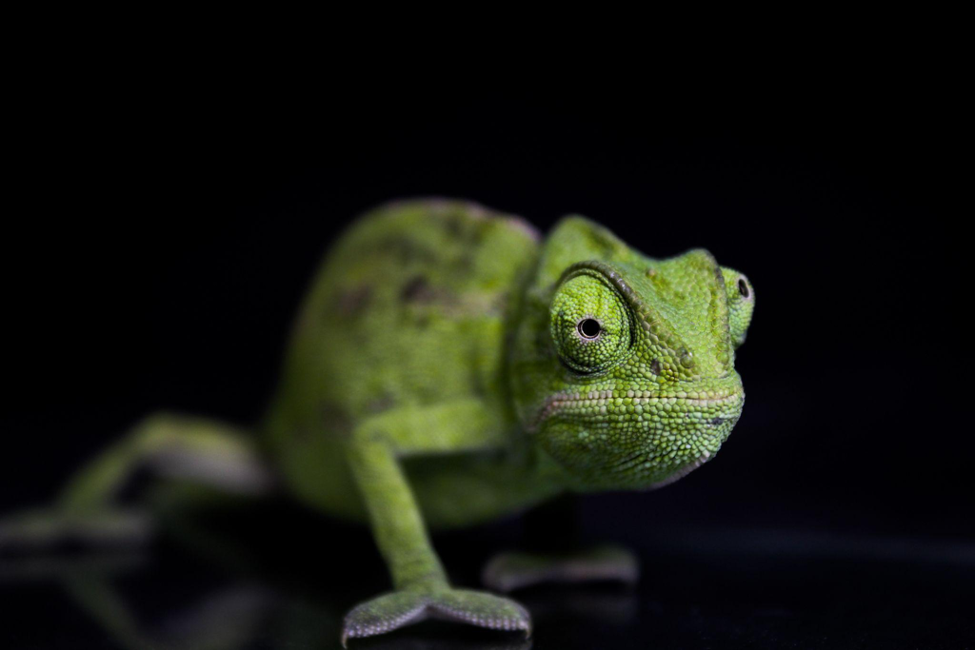News Story
A “Lint Roller” for Moon Dust

The floury dust, or regolith, found on the moon is notoriously hard to clean off: indeed, spacesuits on display at the Smithsonian are still permeated with the stuff. But researchers led by UMD aerospace engineering associate professor Christine Hartzell may have found a solution in the form of synthetic gecko skin.
Under a two year, $1.7 million NASA grant, Hartzell and her team at the Planetary Surfaces and Spacecraft Laboratory plan to engineer and test a device, similar to a lint roller, that astronauts on the moon can use to remove regolith from their suits and some types of equipment.
“We can manufacture a synthetic gecko skin and attach it to a roller,” Hartzell said. “It’s portable and doesn’t have to be plugged in, so astronauts can take it with them when they leave the habitat.”
Also on the project as co-PI is Professor David Akin, director of the Space Systems Laboratory; he’ll be conducting thermal testing to ensure the synthetic gecko skin can withstand lunar temperatures, which range from an ultra-cold 298 degrees Fahrenheit at night to a sizzling 224 degrees during the day.
Real live geckos have an uncanny ability to cling to surfaces, thanks to tiny ridges in their feet that squeeze into nooks and crannies to create traction. This characteristic has been replicated in the lab and synthetic gecko skin has been used for various robotics applications involving gripping. But, the downfall of synthetic gecko skin is that it gets dusty—a characteristic that intrigued a graduate student in Hartzell’s lab, Charles Pett, who wondered if this defect could be turned into a feature to help astronauts clean regolith off spacesuits. Hartzell suggested marrying the gecko skin to a lint roller and making it reusable, undergraduate student Colby Merrill ran initial tests, and the project was born. Now NASA is investing in the technology.
The synthetic gecko skin differs in some respects from its natural inspiration. Instead of ridges, it features tiny hairs that behave in the same way, getting into tiny spaces and sticking to dust. It’s made by applying liquid silicone to a puck-like mold, then spinning it at high speed so it spreads out and dries. The “skin” is then attached to a roller.

Geckos have an uncanny ability to cling to surfaces, thanks to tiny ridges in their feet that squeeze into nooks and crannies to create traction. This characteristic has been replicated in the lab and synthetic gecko skin has been used for various robotics applications involving gripping.
Hartzell and her team have already conducted lab-bench tests, using flour and later cinnamon to simulate the lunar dust–cinnamon because it’s easy to see on the white fabric used in space suits. “We found that it picks up about 90% of the simulated lunar dust that we scatter,” Hartzell said.
They’ll now be utilizing a simulant manufactured at the University of Central Florida's Exolith Lab and testing the product in vacuum chambers calibrated to simulate the lunar surface.
With actual lint rollers, sheets are torn off and discarded after use. Their lunar equivalents, by contrast, are meant to be cleaned and reused. Once astronauts return to the habitat, they’ll place the rollers inside a cleaning appliance that Hartzell’s team is in the process of engineering. They haven’t yet settled on the specific cleaning method; candidates include centrifugal acceleration, in which the roller would be spun at speed to cause the dust to fly off, or using an electron beam to charge the dust particles, which would then repel each other and detach from the roller.
A third approach would be to use a NASA-developed technology known as an electrodynamic dust shield, in which wires are embedded beneath the gecko skin membrane; an electric field would then be generated, again causing the dust to fly off.
The rollers can’t be used on all surfaces: they wouldn’t be a good choice for optical surfaces, for instance, since the “hairs” of the gecko skin could cause scratching. But they could be used on other less sensitive pieces of equipment like solar panels, Hartzell said. And it could help astronauts remove the regolith from their suits.
In so doing, the rollers could help alleviate a number of regolith-related woes, including hay fever, experienced by Apollo astronauts when they inhaled regolith released into the Lunar Lander, as well as changes to the thermal properties of suits and equipment that come about due to the undesired coating of moon dust.
Published September 14, 2023









